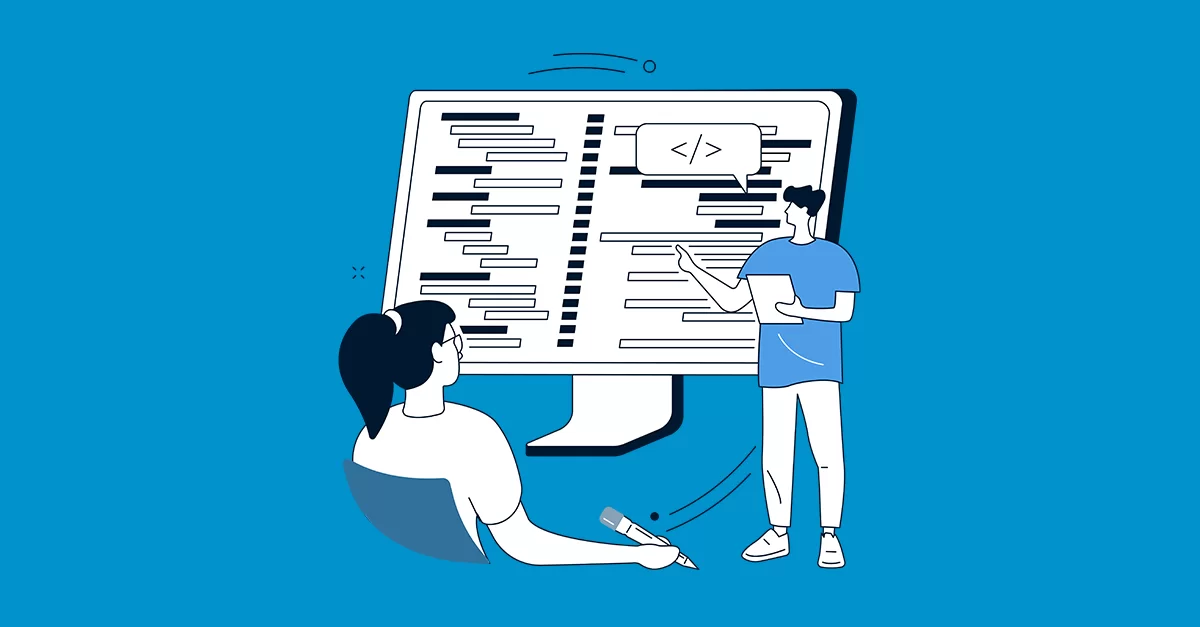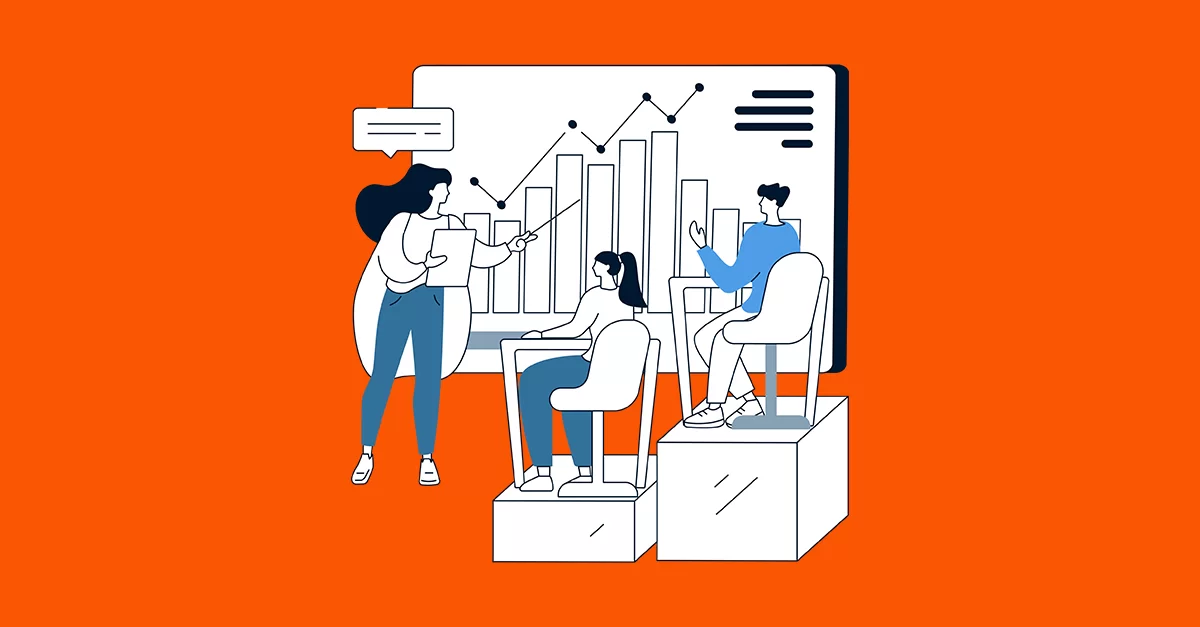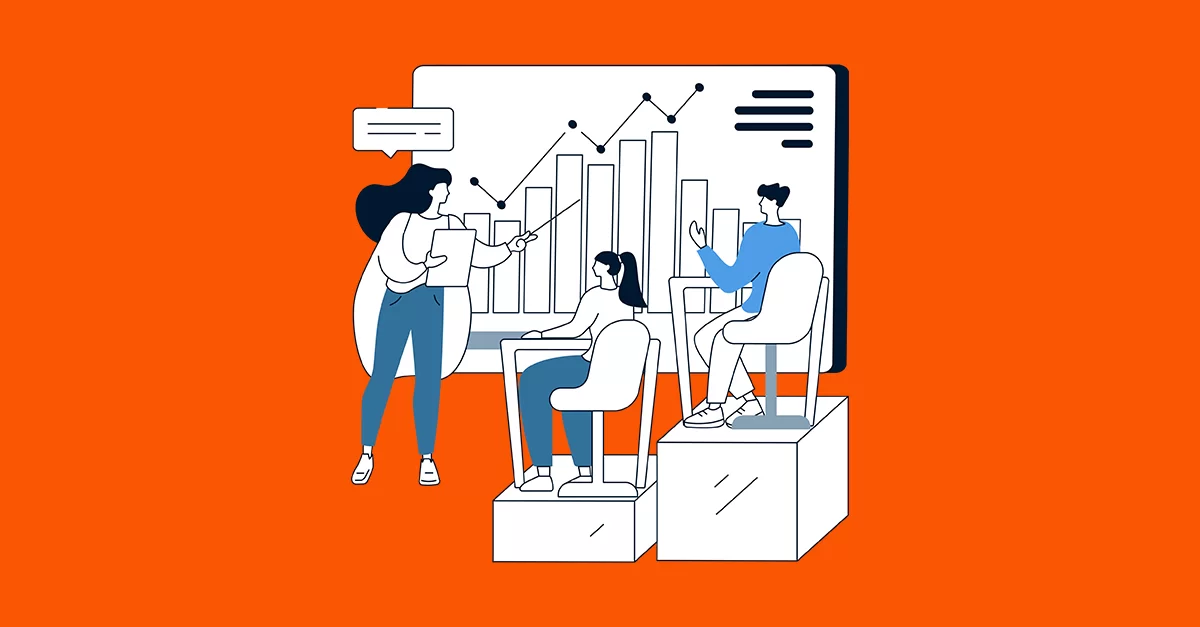
When it comes to emerging technologies, conceptual confusion and confusing different technologies is quite common. In this context, RPA (Robotic Process Automation) and ITPA (IT Process Automation) are among the most frequently confused technological processes, both in terms of their definitions and their relationship with each other. While the term RPA evokes the connotation of a physical robot for many people due to the “robotic” in its name, it is a software-based solution that performs operations in digital systems by mimicking human interaction. One of the biggest advantages of Robotic Process Automation (RPA) is that it can be deployed without the need to change your existing IT infrastructure or systems. Thanks to its easy integration capability, RPA allows you to manage your costs more effectively while increasing operational efficiency. IT Process Automation (ITPA) is the deployment of software and systems to eliminate repetitive tasks and minimize the need for human intervention.
It also automates previously manual processes, enabling faster and more efficient delivery of both IT infrastructure and applications. Although both aim at process automation, efficiency gains, cost reduction and service improvement, their application areas, technical depth and intended use cases are different. A clear understanding of these differences is critical to assessing the future position and development direction of RPA in business processes.
As a result, RPA digitizes business processes, while ITPA makes infrastructure operations smarter and faster. For more comprehensive information about the technical details and use cases of these two technologies ” We recommend you look at our blog post “Why do we need ITPA when we have RPA?”
What are the 3 Key Differences Between RPA and ITPA?
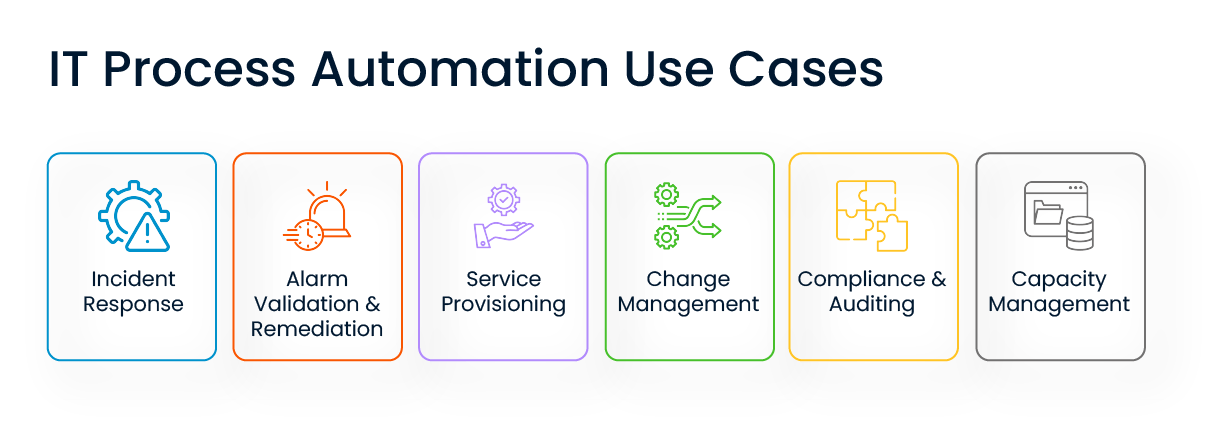
ITPA (IT Process Automation) focuses on known problems and measurable benefits that have long faced IT departments. While 80% of resources are dedicated to sustaining day-to-day operations, only 20% can be directed towards strategic and innovative business goals. Various solutions have been tried to address this imbalance, such as outsourcing, but complex processes such as mergers, acquisitions and systems integration have further increased the operational burden for IT teams.
To address these challenges, IT departments have turned to more structured service management approaches by adopting process-oriented frameworks such as ITIL. As part of this framework, ITPA provides operational efficiency by automating certain IT tasks. However, unlike RPA (Robotic Process Automation), ITPA is more of an automation approach that works within the IT infrastructure, targeting systemic and technical tasks. This difference is critical to understanding how RPA and ITPA differ in terms of domain, scope and target.
RPA is designed to automate complex IT processes, especially in high-security environments. For example, in the process of provisioning a virtual server, all steps from change request tracking to configuration auditing, from creating the appropriate virtual package to deploying the server can be collected in a single workflow.
Discover how you can strengthen your RPA processes with our ‘Integrated RPA Monitoring and Alarm Management with UiPath’ content!
In this way, the process is started and completed without the need for any IT specialist. The fact that ITPA provides this level of systemic control and integrity is one of the most critical competencies that distinguishes it from RPA.
Since ITPA tools are developed for the technical knowledge level of IT staff, user interface intuitiveness and ease of use may take a back seat. People using these tools are already familiar with screen content, terminology and process logic.
In contrast, RPA solutions are often targeted at non-technical business users and therefore ease of use is at the forefront. As a result, configuration complexity can be a risk for RPA, whereas ITPA can manage this complexity more easily.
Advantages of RPA and ITPA for Your Business Processes!
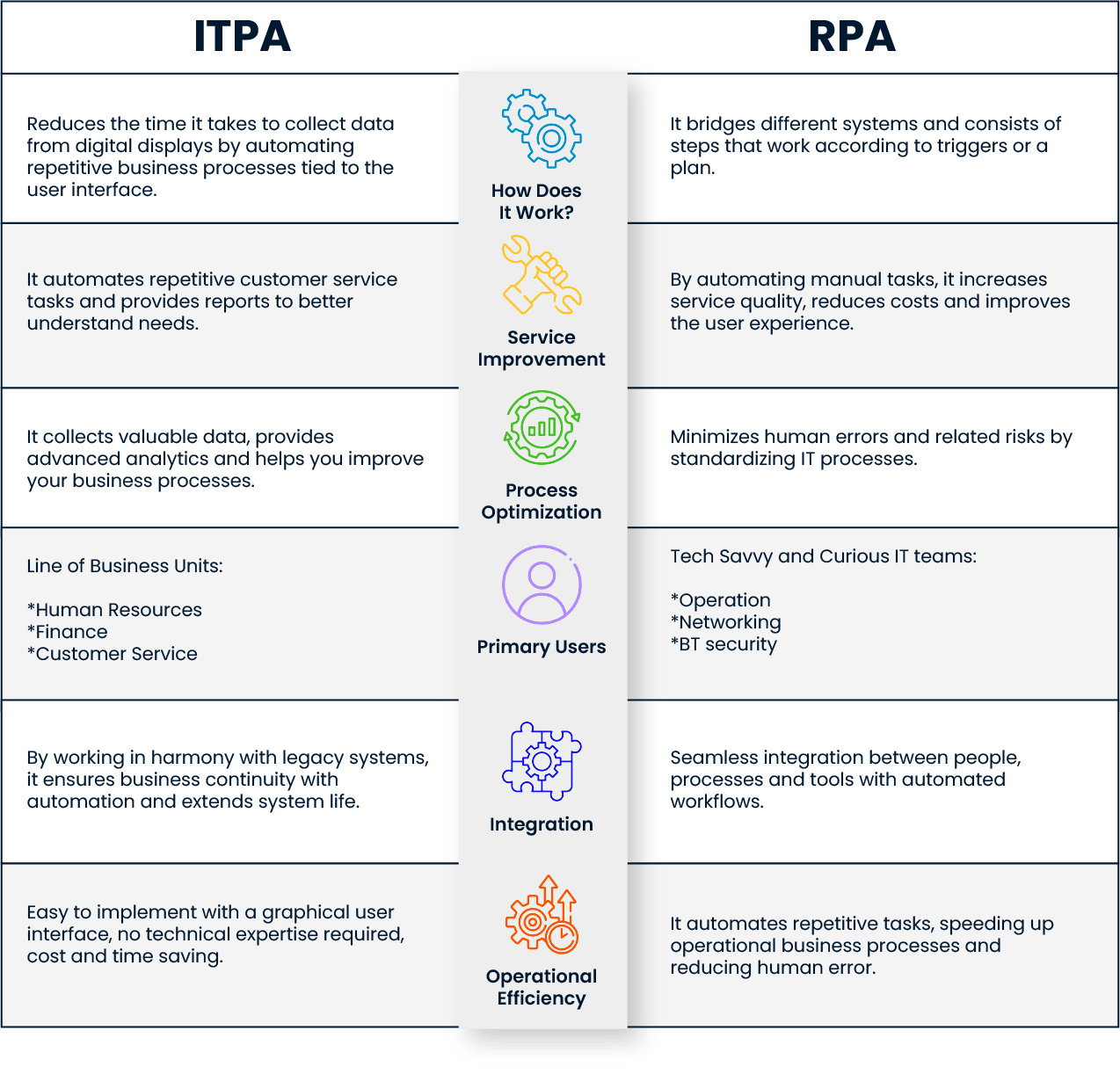
Empower Your Business Automation Processes with SPIDYA!
Taking advantage of the automation opportunities offered by RPA and ITPA technologies in your business is an excellent step to speed up your processes and increase operational efficiency. However, to implement these technologies effectively and quickly, flexible and easy development environments are needed.
SPIDYA Low-Code Development Platform provides a great advantage with its user-friendly and powerful tools to implement these processes quickly and effectively. With SPIDYA, you can integrate the power of automation directly into your business processes without the need for technical knowledge!
